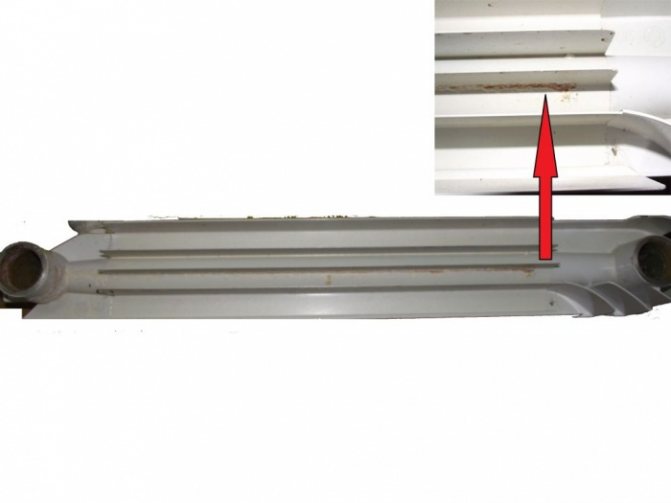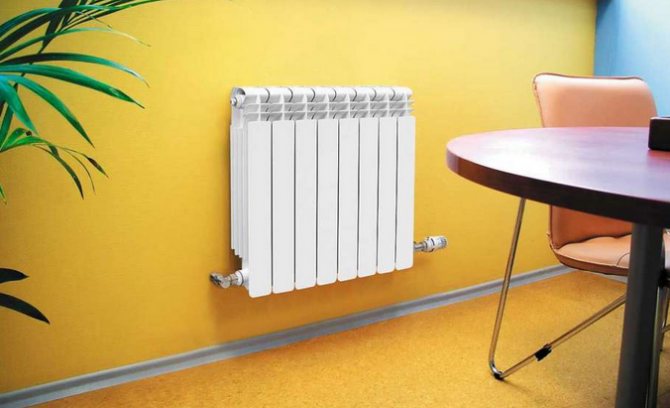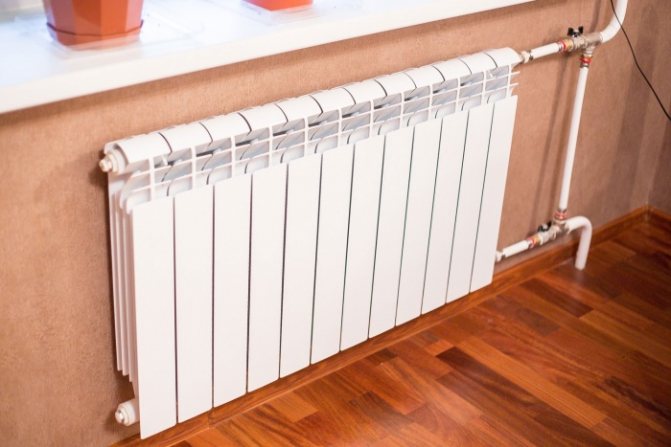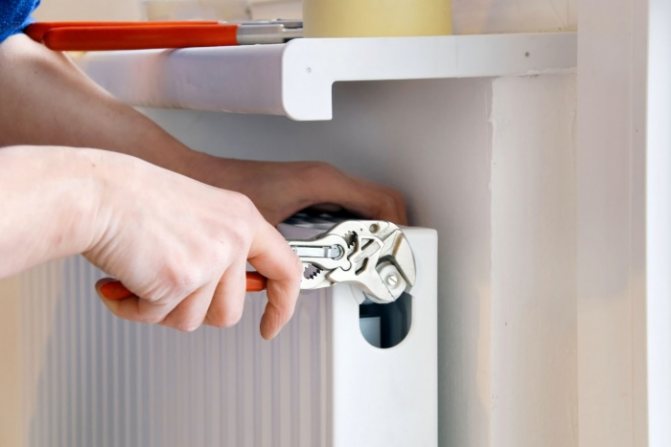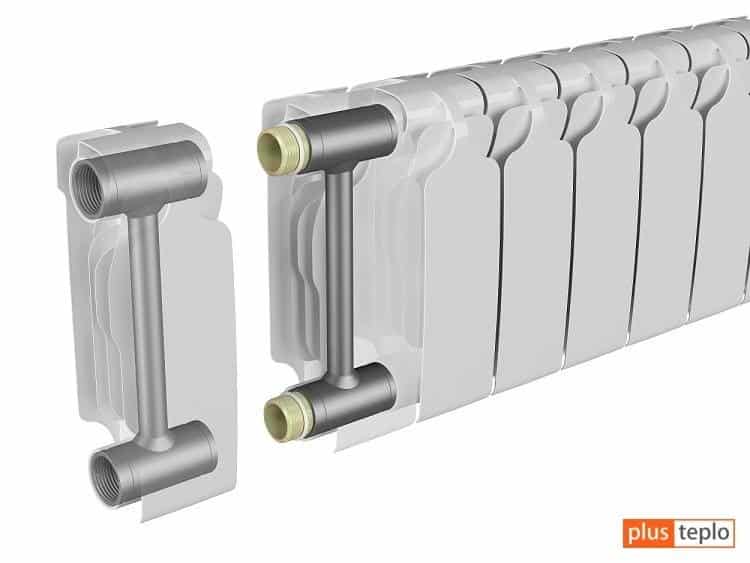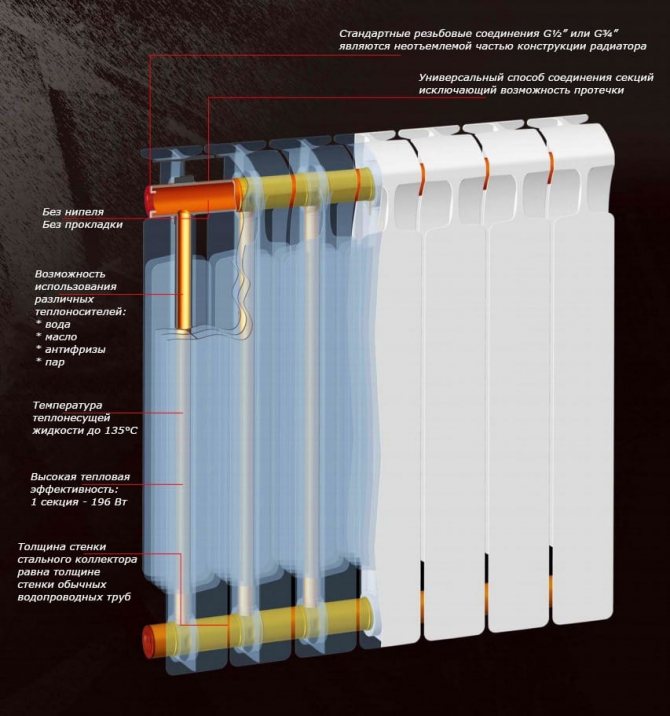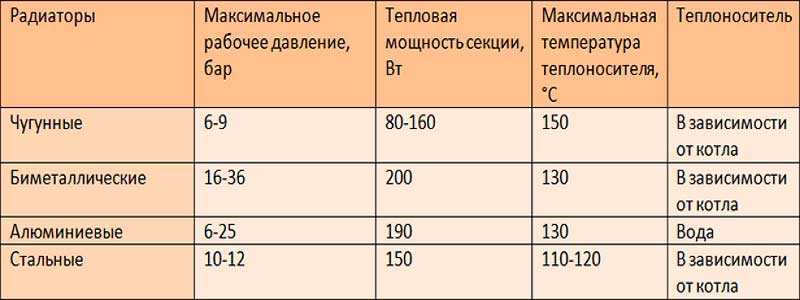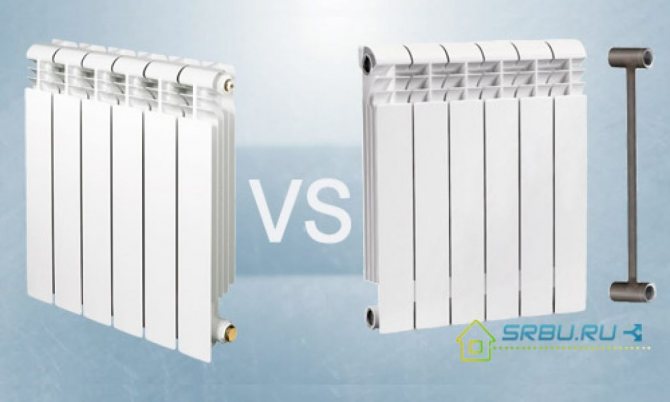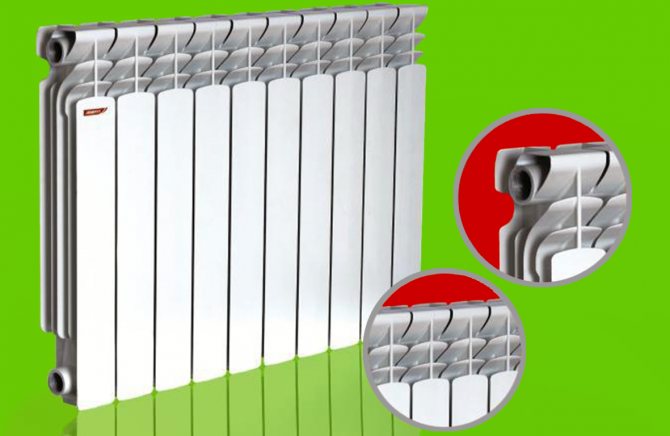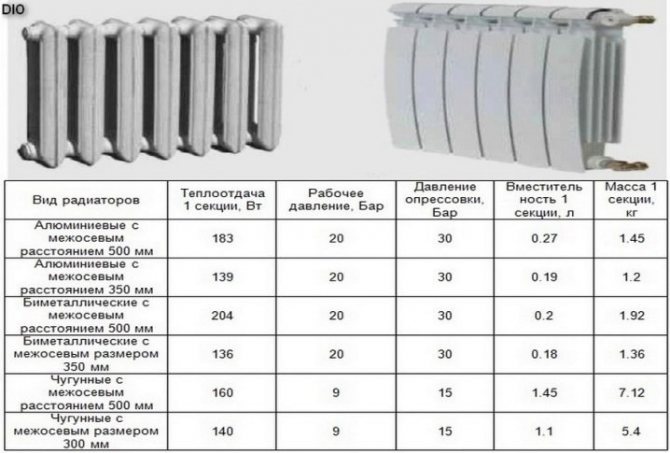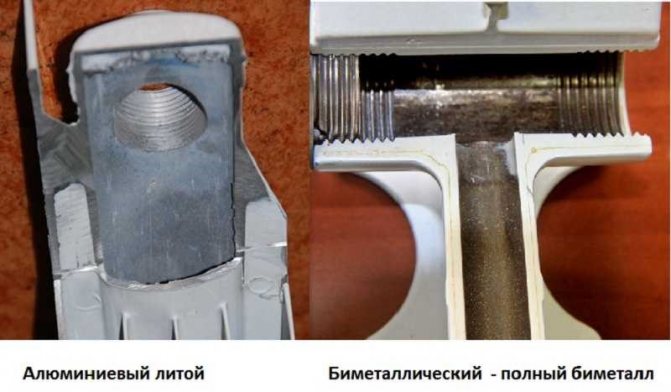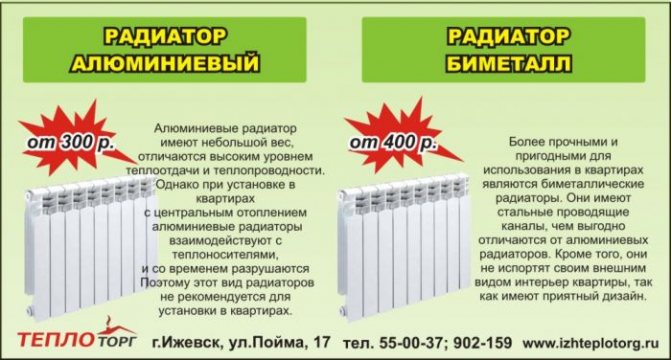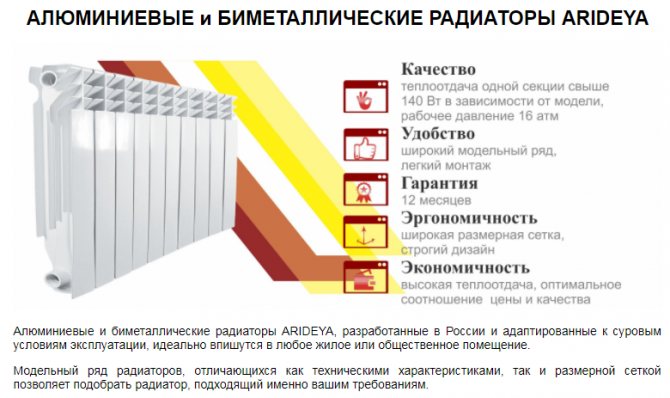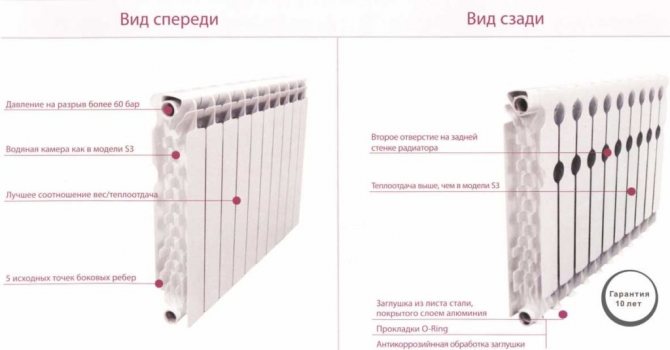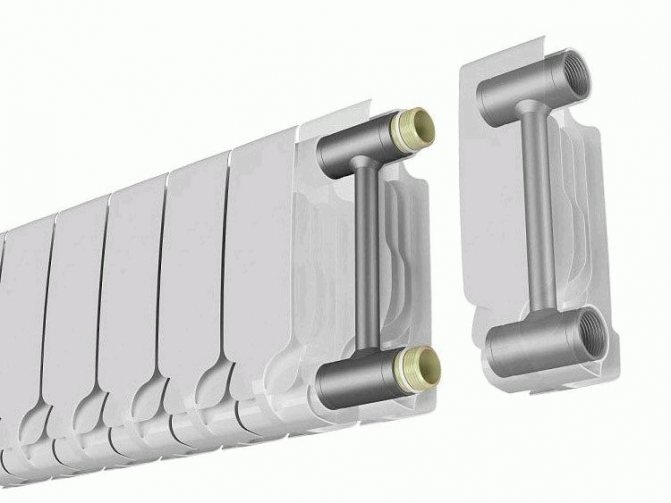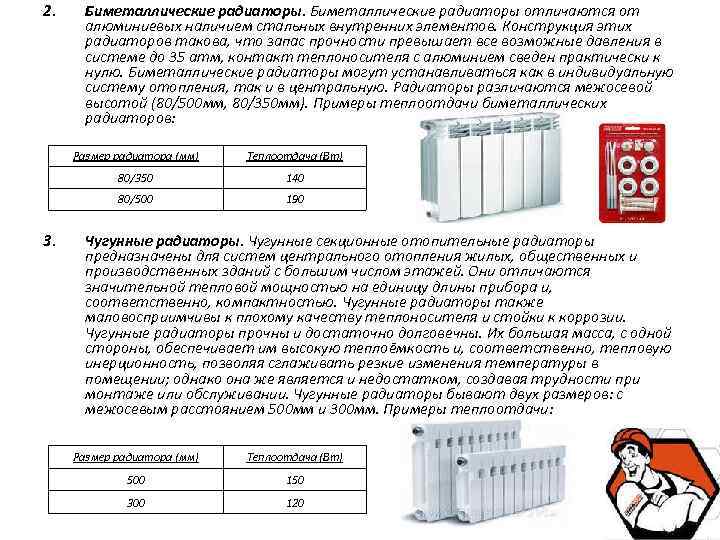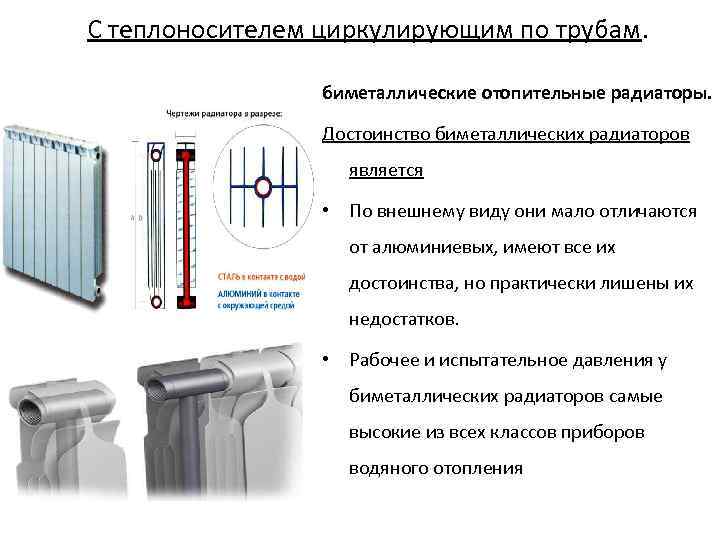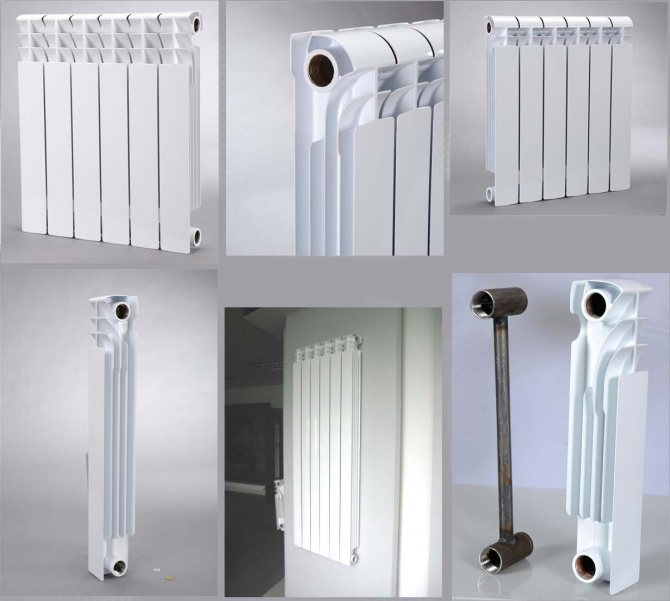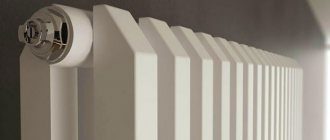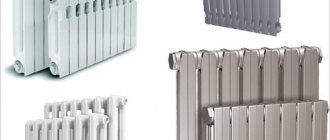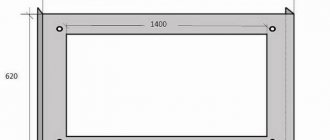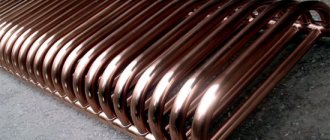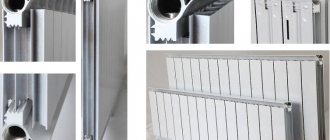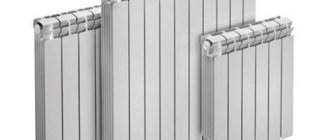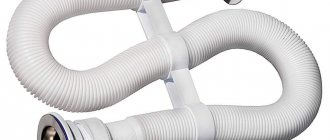Very often old batteries lose their properties and do not give off heat completely, so they need to be replaced with new ones. Manufacturers manufacture a wide variety of heating equipment. For example, radiators can be of different technical characteristics and metals.
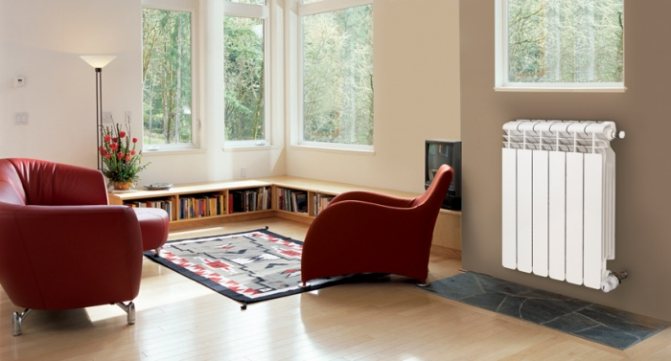
Because of such a variety, the next question pops up among the owners: which heating radiators are better than aluminum or bimetallic ones? In order to understand this issue, you should know the features and characteristics of these devices.
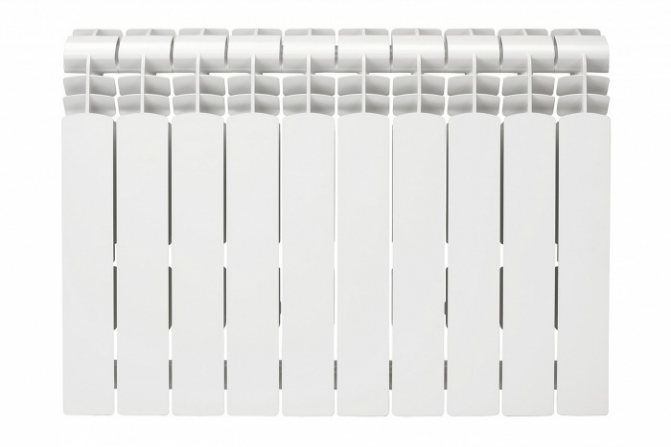

Comparison of aluminum and bimetallic batteries
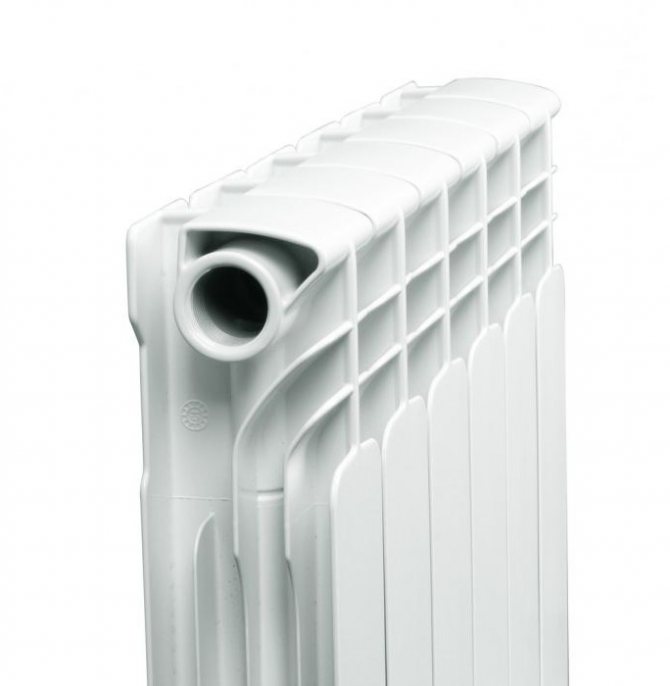

Aluminum radiators look good and neat, they have several sections that are connected by nipples. There are gaskets between the sections, they provide the desired tightness. The ribs are located on the inside, they increase the heat transfer area up to 0.5 m2. Such batteries are manufactured according to one of the technologies existing today. For example, the extrusion method makes it possible to obtain cheaper and lighter products, but their quality cannot be called high. Today, this technique has already been abandoned in Europe.
If you are thinking about the question of how bimetallic heating radiators differ from aluminum ones, then you should pay attention to the fact that the latter can also be made by casting. The products are more expensive, but they will last longer. Bimetallic batteries are made using two different metals. The body has fins, which are based on an aluminum alloy. Inside the body there is a core made of pipes, hot water flows through them. Such pipes are made of copper or steel, but the first option is less and less common today. Many consumers are also thinking about how to find out if the radiator is aluminum or bimetallic in front of them. The diameter of the latter is smaller compared to aluminum models. Therefore, there is a higher likelihood of clogging. When consumers consider the advantages of bimetallic radiators over aluminum ones, they first of all note a more attractive appearance. After all, all the components of such products are hidden inside, so the design is able to satisfy the most sophisticated requests.
Aluminum Heatsink Specifications
It is believed that radiators made from this metal are very effective. They are often used to heat rooms, and over the course of their existence, they have proven themselves well and have shown their advantages and disadvantages. Many are attracted by the design of batteries and their appearance. Another advantage is its low weight. There are other benefits of aluminum batteries as well. In order to see them, you should pay attention to the manufacturing method and installation features. These radiators are manufactured using two technologies:
- Extrusive method.
- Foundry technology.
In the manufacture of the first method, an aluminum profile is used. With the help of a press, individual elements are formed from an aluminum profile, which are subsequently welded to each other and form whole sections. Further, the finished sections are combined with each other, and gaskets and very high-quality insulation are used for tightness.
In the second case, a monolithic structure is created that has no joints, thanks to which the product has high strength. If all production processes are followed, a very reliable product is obtained.
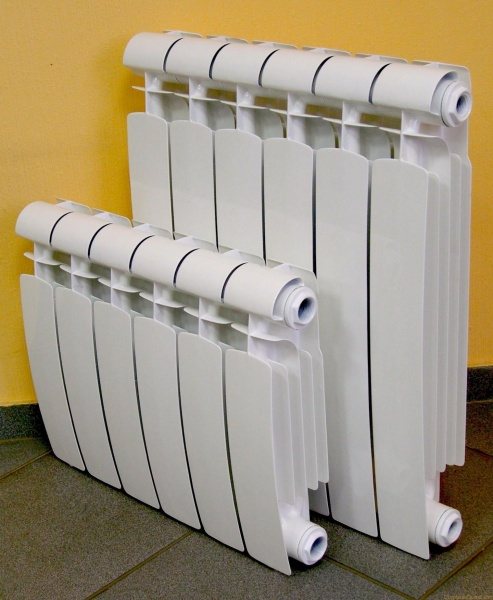

Aluminum is a metal that heats up very quickly.The special design of this battery gives off heat to the room as follows: the heat that comes from the batteries moves to the ceiling due to convection air currents.
The thermal power of each one section is 120 watts. The depth of the section is from 70 to 110 mm, and the weight is in the region of 2 kg. To fill one section with a coolant, you will need 0.4 liters. The maximum temperature at which the radiator works normally is 90 degrees.
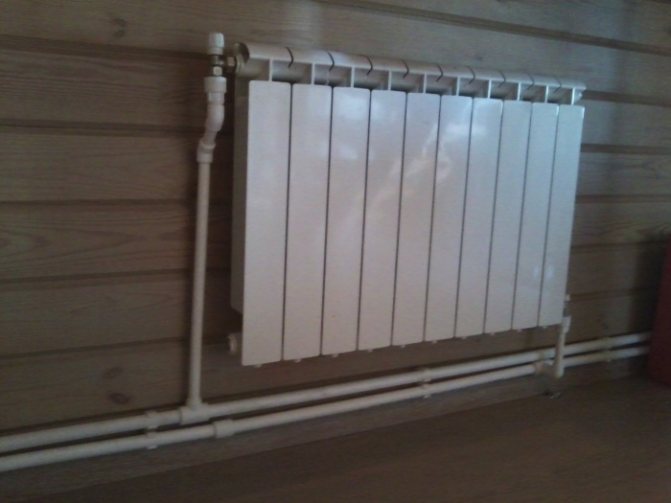

Which batteries are better when it comes to heat dissipation?
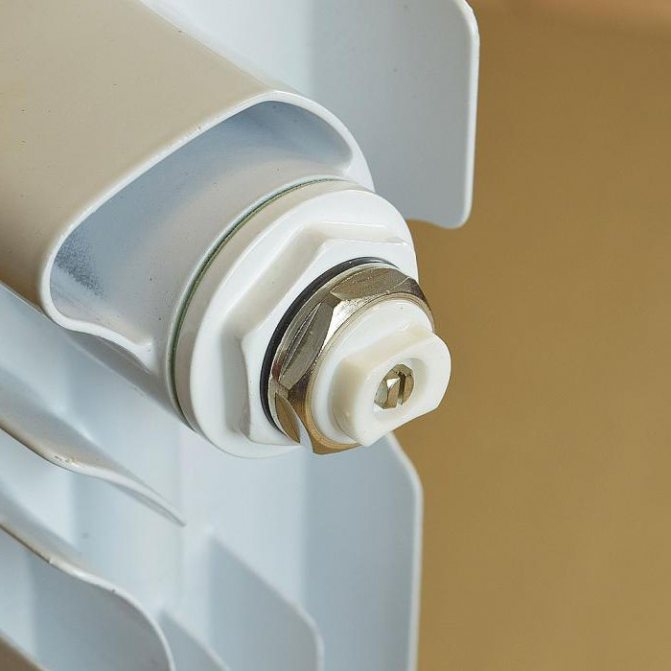

If you are deciding how aluminum radiators differ from bimetallic ones, then you should also compare them in terms of the intensity of heat transfer. Aluminum radiators take the lead in this matter. One section is capable of delivering approximately 200 watts of thermal energy or more. Half of the heat is given off as radiation. The other half is convection. The ribs of the battery allow for increased heat dissipation. Aluminum has no equal in this matter. Among other things, it has minimal thermal inertia. If you turn on such batteries, then after 10 minutes it will be warm in the premises of a house or apartment.
If we are talking about a private building, then with the help of aluminum radiators it is possible to save a lot. Today, aluminum and bimetallic heating radiators are becoming popular, the characteristics of which are presented in the article. The latter differ in heat dissipation, which depends on the manufacturer and model. This parameter will be lower compared to an aluminum radiator. This is due to the fact that the steel core reduces heat transfer, which is 1/5 less compared to an aluminum battery of the same dimensions.
Scope of use
Since aluminum batteries are not highly durable, they are mainly used in one-story houses or apartments with autonomous heating. However, if it is necessary to create a closed heating system, where the pressure is high, then bimetallic batteries are optimal, because they are resistant to water hammer and high pressure. Their main use is in commercial or residential buildings and in multi-storey buildings.
Advice! In a private house, in which heating is with low pressure, it is best to use aluminum batteries, because they will withstand the generated load, and the price is much lower than that of bimetallic ones.
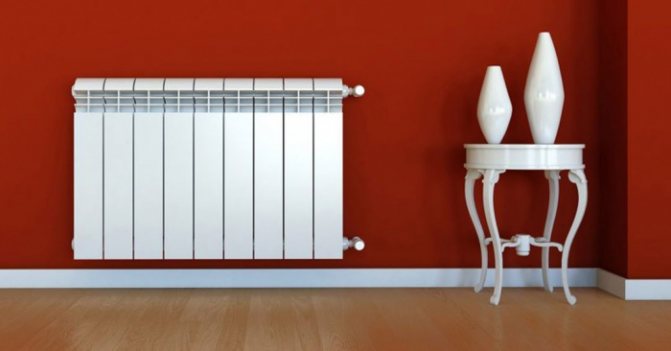

Differences between aluminum and bimetallic batteries in terms of the ability to undergo water hammer
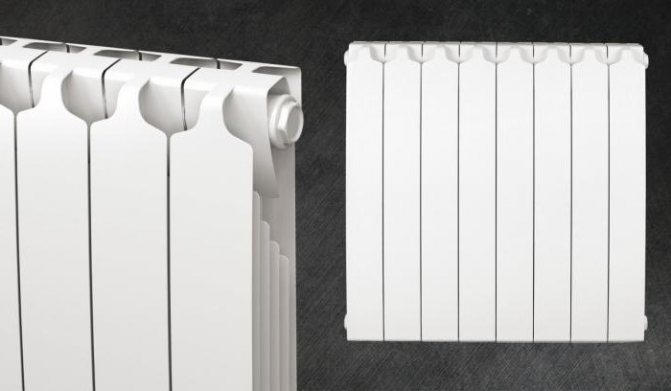

In this matter, aluminum is on the second together. Its working pressure is not so high, it varies from 6 to 16 atmospheres, and in some models this parameter reaches 20 atmospheres. If you install such radiators as a component of central heating, then the products may simply not withstand the effects of high pressure. A water hammer can cause the battery to burst, and a hot flood will turn out in the apartment. Therefore, you should not risk installing an aluminum radiator in an apartment in a multi-storey building.
If you are wondering how bimetallic radiators differ from aluminum ones, then it is worth comparing these products in terms of their ability to withstand high loads. Bimetallic batteries have a strong steel core, which is prepared for high pressure head. Such products are able to withstand pressure from 20 to 40 atmospheres. Therefore, it can be argued that bimetallic radiators are more reliable in case of unstable pressure, when there is a possibility of water hammer.
Advantages of aluminum radiators
Radiators made of this metal have quite a few advantages, here are some of them:
- fuel is saved up to 35%, while heat transfer is high, and the amount of coolant is minimal;
- the set for the battery includes a thermal valve, which is used to regulate the fluid supply and adjust the desired or set temperature. Thanks to this valve, fuel economy is achieved;
- also, these batteries heat up very quickly, however, they cool down instantly. Nevertheless, thanks to the rapid heating, the room temperature reaches the desired level in just 15 minutes. A similar time will be needed to cool the room after turning off the heating;
- it is impossible not to mention the design and the original form of the radiator, made of aluminum. It is ideal for both residential and office environments. If the radiators are manufactured by the extrusion method, this will allow the consumer to independently add the required number of sections. In the case of manufacturing by casting, it is possible to make radiators according to the individual requirements of the user;
- batteries made from this metal have compact overall dimensions, therefore, relatively little space is required for their installation. Since the weight of this battery is small, it is easy to install and mount it on any walls.
Not so long ago, aluminum sections began to be used only when installing autonomous heating due to the operating pressure, which has only 6 atmospheres.
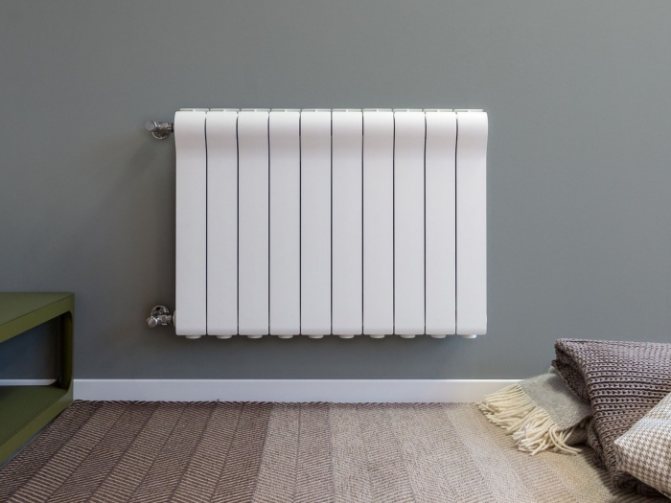

Which radiator to choose from the point of view of the coolant
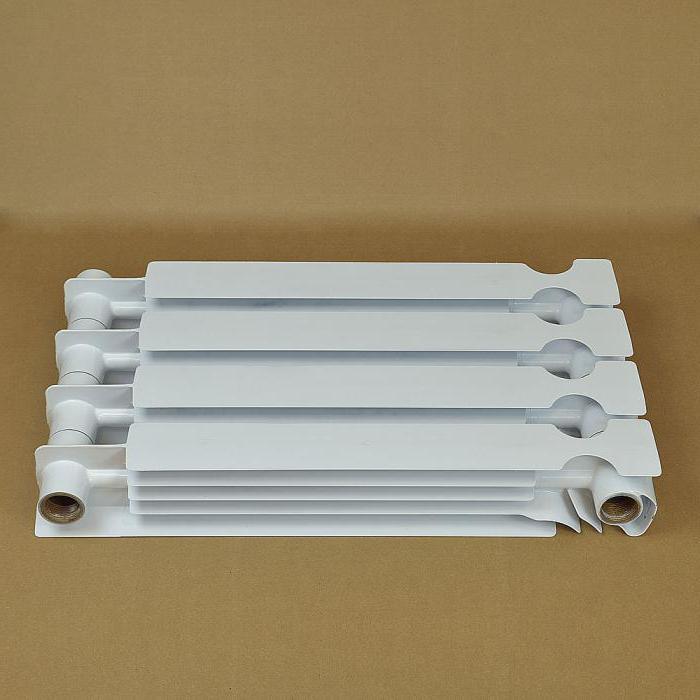

Quite often, owners of real estate and apartments wonder how aluminum radiators differ from bimetallic ones. This issue should also be considered from the point of view of the coolant. Aluminum is capable of entering into chemical reactions, so water is just a treasure for it. It contains so many chemical impurities that the walls of the batteries can corrode during operation. Therefore, if the ph-level of the water flowing in the system exceeds 8 units, then you should expect trouble. However, using central heating, it is simply impossible to keep track of these parameters.
Even during a chemical reaction, aluminum is capable of releasing hydrogen, which creates a fire hazard. Therefore, it is necessary to bleed air from such radiators from time to time. Steel pipes located in the core of a bimetallic product are less demanding on water quality. This is because steel is not as reactive as aluminum alloys. Corrosion will get to such material, but it will not happen so soon. Among other things, manufacturers cover the surface with a protective layer, sometimes stainless steel is used in the manufacturing process, but it makes radiators expensive.
Conclusions from comparative characteristics
When buying radiators, you need to take into account the main performance characteristics: the ability to withstand significant pressure drops, resistance to corrosion processes, the strength of the section connections and, ultimately, the durability of the product.
Aluminum can be installed in private households, where it is possible to control the quality of the coolant and the pressure in the system. They will serve you well for many years. Home owners will get good quality at an affordable price. However, such radiators should not be installed in houses where antifreeze is supposed to be used as a coolant.
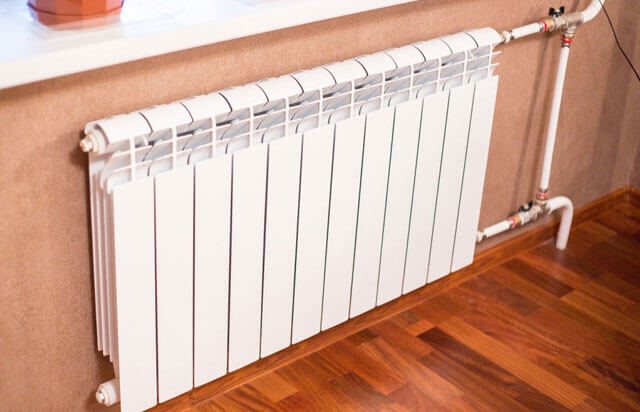

Bimetallic ones are ideal for apartment buildings where premises are heated centrally. They can withstand high pressure and are suitable for a coolant of any composition.
The difference between a battery and a radiator is its ability not only to give off, but also to accumulate heat. In this respect, of course, cast iron models win. However, they are overly heavy, expensive and justifiable in homes where the heating system runs on solid fuels. In other cases, it is more convenient to install modern heating devices made of aluminum or bimetallic, which are convenient to install even on your own.The radiators are supplied with wall brackets, air vents and other elements necessary for installation.
Not every type of radiator is capable of withstanding the harsh everyday life of centralized heating. As it turned out, only bimetal and cast iron do not burst from high pressure and are not eaten by corrosion in a couple of seasons. But still, which radiators are better - bimetallic or cast iron - we will consider and compare their technical characteristics.
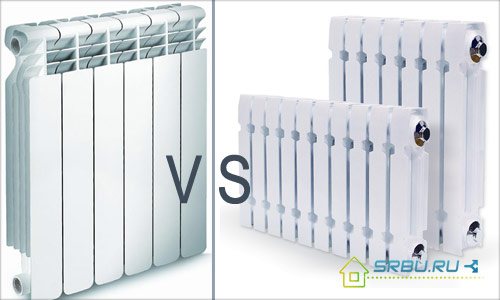



The choice of radiators by the temperature of the coolant
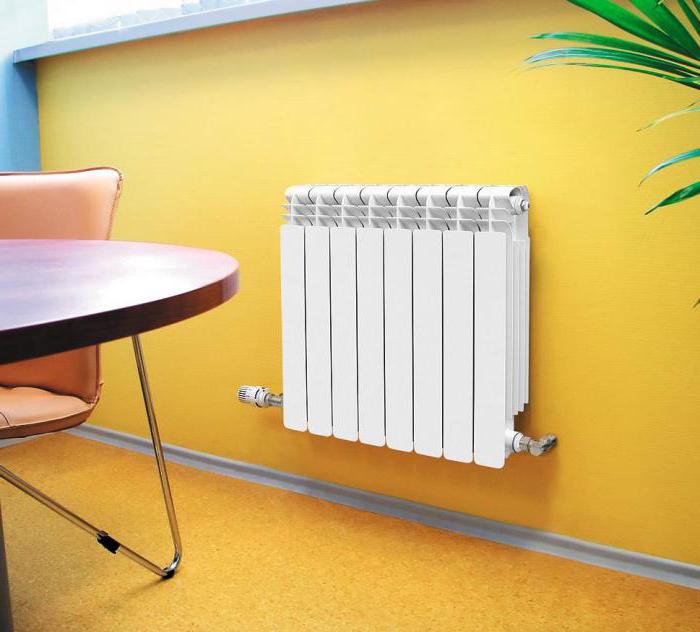

Installation of aluminum, bimetallic heating radiators is carried out quite often today. However, before purchasing such products, you should inquire which of them are capable of working when exposed to water of impressive temperature. Aluminum is able to withstand 110 ° C, which is average. For bimetallic radiators, this characteristic reaches 130 ° C, so these products benefit.
High temperature resistant
The temperature of the coolant in heating systems most often does not exceed + 90-100 degrees, and if the winter is warm, then it is even less. In some situations, the temperature deviates from the current standards:


Due to the fact that steel pipes form the basis of a bimetallic radiator, it is much more resistant to high temperatures and pressure.
- The employees of the boiler room did not check it;
- Gas pressure has changed;
- Automation did not work correctly;
- Households have incorrectly set the parameters of the boiler.
As the temperature rises, the pressure also increases, and the overheated coolant begins to have a negative effect on the batteries. In such conditions, aluminum radiators are not able to withstand heating above +110 degrees. As for the bimetallic counterparts, they can easily withstand heating up to + 130-140 degrees Celsius. High resistance to high temperatures contributes to the safety of the heating system. Therefore, this parameter should not be neglected. This is most relevant for centralized heating systems, which use very powerful boilers, and which are characterized by the greatest number of all kinds of breakdowns.
If an outdated boiler house with an ancient boiler operates in a residential area or a residential complex, then the choice is clearly for bimetallic radiators - they will provide a decent level of safety and prevent flooding of the apartment, showing resistance to high temperatures.
Reliability and durability


If you are thinking about the question of how aluminum radiators differ from bimetallic ones, then you should first of all understand that aluminum products will be destroyed by water hammer, corrosion and frequent, as well as impressive, temperature changes. Therefore, in terms of reliability, the leaders are again products made of two metals, they combine the best qualities of each material. Such products are ready to serve for more than 20 years, naturally, in this case we are talking about a quality product of brands that have established themselves in the market. Aluminum radiators have half the service life. Once installed, they are ready to serve for 10 years.
Comparison for ease of installation
Bimetal and aluminum lend themselves quite easily to comfortable installation, they weigh less when compared with cast iron. There is no need to use powerful brackets for fastening, even a drywall wall will be able to support a small weight. If the supplied pipes are made of plastic, only fittings and a set of keys are needed for installation work. But as practice shows, bimetallic batteries are still easier to install, since steel cannot deform, unlike aluminum, which is soft metals.
Price comparison
If you are faced with the question of how aluminum radiators differ from bimetallic ones, then it is worth considering these products also in terms of price. The second option is 1/5, and sometimes 1/3 more expensive compared to aluminum products. This difference is quite significant, so today bimetal is not so common among private consumers, because it is not available to everyone. Bimetallic devices have a higher hydraulic resistance, so more energy is required to pump water, which increases the cost of operation.
Features of bimetallic radiators
Two types of metal are used in the manufacture of these products - steel and aluminum (“bi” means two). The section is a high pressure cast steel pipe into an aluminum jacket. Steel elements mate with the pipeline, withstanding pressure surges and successfully resisting corrosion. The aluminum coating provides high heat dissipation. The sections are connected to each other by means of nipples.
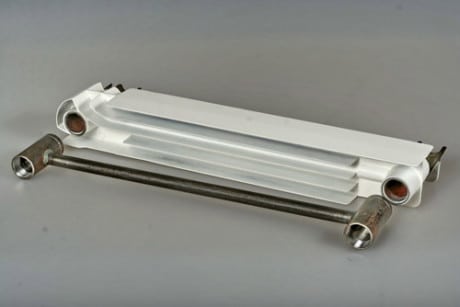

Steel tube in an aluminum casing
Pros of bimetallic batteries
- Durability and long service life (over 25 years) due to the inner steel pipe. This is the main difference between bimetallic and aluminum radiators.
- High heat dissipation. A small amount of energy is spent on warming up the radiator itself. Heat is transferred to the room almost immediately.
- Working pressure up to 40 atmospheres.
- The maximum temperature of the coolant is 130 degrees (for aluminum batteries - 110).
- Resistant coating. Coloring is carried out in two stages: first, the product is completely immersed in a coloring solution, after which a polymer layer based on epoxy resin is sprayed. Such processing not only gives the battery an aesthetic appearance, but also increases its tightness.
- Easy to transport and install. You can increase the number of sections on site.
Important! Some bimetallic models have a single steel core and are not divided into sections. The advantage of such products is that they can withstand high pressure and are not subject to leaks.
Cons of bimetal
The difference between aluminum and bimetallic radiators is that the heat transfer from bimetal is lower. The steel core significantly reduces this figure.
The cost of bimetallic batteries exceeds the price of aluminum ones by about 30%. The operating costs are also higher - bimetal has a higher hydraulic resistance, so more energy is needed to pump water.
Improper use of batteries will corrode steel elements. This happens if water is drained from the system at the end of the heating season. Simultaneous contact with air and water creates conditions for steel rusting.
The narrow bore of the iron pipe increases the risk of clogging and shortens the life of the product.
Note! Steel and aluminum have different coefficients of thermal expansion, so after a while the radiator begins to emit characteristic sounds. It is not dangerous
Comparison of aluminum and bimetallic radiators
- Externally, aluminum and bimetallic radiators are similar - they are metal rectangles with flat fins, painted in neutral tones. The number of sections for both is from 6 to 12. The average heat transfer of the devices does not differ much - from 180 to 200 watts. But the use of devices has its own characteristics.
- Aluminum batteries are installed where maximum heat transfer is required at low pressure and good quality of the coolant, namely in private houses. You can put bimetallic sections in an autonomous system, but this will be an unjustified waste of money.
- Bimetal devices were created taking into account the peculiarities of domestic centralized heating systems. The steel filling of the battery withstands frequent pressure drops in pipes, hydrodynamic shocks, aggressive impurities in the coolant.Therefore, bimetallic radiators should be installed in the central heating system.
Finally. When buying radiators, it is better not to save money and choose well-known brands. If the production technology is not followed, the equipment will not last long
It is extremely important that experienced specialists are engaged in the installation, since the operation of the entire heating system and the heat in the house depend on the correct installation of the batteries.
Choosing a radiator for a specific heating system
Having considered the main characteristics of radiators, we can conclude which model is suitable for a particular system. If you use central heating, then the pressure in it can change dramatically, sometimes the mark reaches exorbitant values, and water hammer occurs. The temperature will not be stable, it can change during the heating season and even during the day. The composition of the coolant does not differ in purity, it contains chemical impurities, abrasive particles, and there is no need to talk about an acceptable ph level either. Based on all this, it can be argued that it is best to refuse aluminum batteries in such systems.
Disadvantages of aluminum radiators
Despite the many positive aspects of aluminum batteries, there are several disadvantages that must be considered when choosing such products.
When assembling the radiator, rubber gaskets are used, which wear out quickly, and this leads to dangerous situations. Therefore, these models of the radiator are not used in places where the coolant is a chemical, for example, antifreeze.


Another disadvantage of aluminum is that it corrodes. If the water used for heating is of poor quality, then it can damage the thin protective film that is inside the radiator. Then the device will fail very quickly.
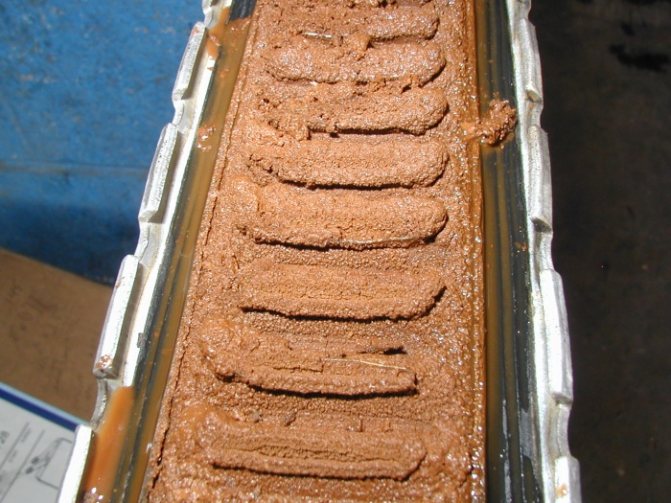

For devices, a Mayevsky tap is necessarily screwed in, because they are very often airy.
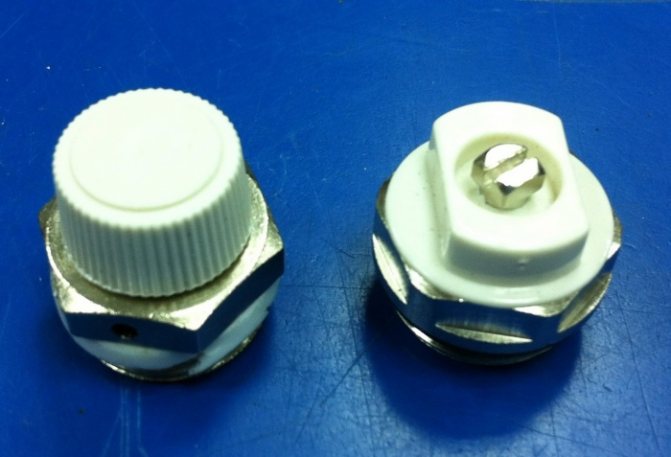

Another drawback is the sensitivity to water hammer. For example, if the pressure in the system rises sharply, this will break the tightness of the device. This moment is precisely the reason why this device is not installed in rooms with central heating. However, if the radiators are made by the casting method, then their use is allowed.
